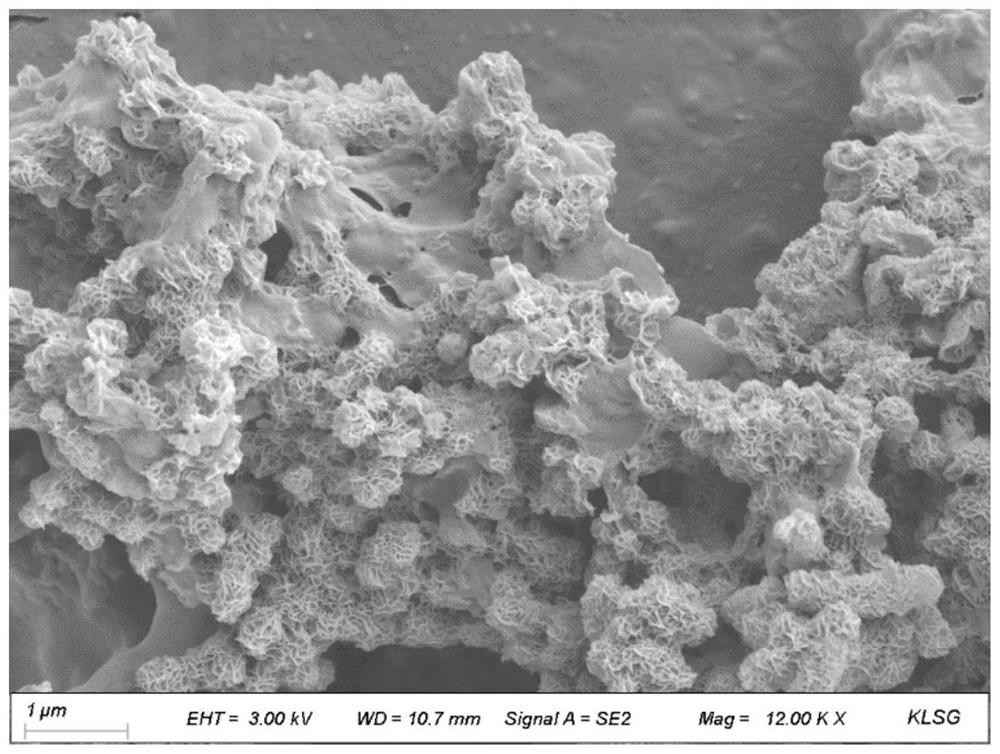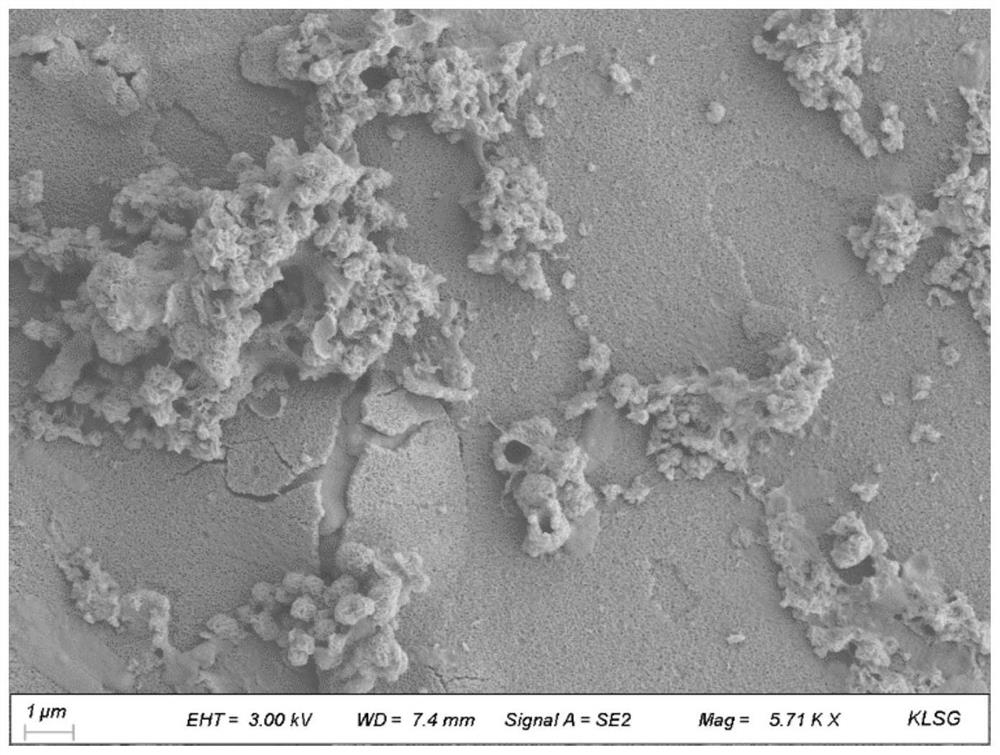Method for sealing carbon dioxide by using basophilic algae
A carbon dioxide and alkaliphilic technology, applied in chemical instruments and methods, separation methods, dispersed particle separation, etc., can solve the problem of difficult to effectively utilize the characteristics of high bio-oil production of microalgae, limit the application of microalgae carbon fixation technology, and limit biodiesel Development and other issues, to achieve the effect of improving the efficiency of microalgae carbon sequestration, reducing the cost of mineral storage, and improving the net storage efficiency
- Summary
- Abstract
- Description
- Claims
- Application Information
AI Technical Summary
Problems solved by technology
Method used
Image
Examples
Embodiment 1
[0039] A method for utilizing alkaliphilic algae to sequester carbon dioxide, comprising the following steps:
[0040] (1) Take the Synechococcus FACHB-805 purchased from the Freshwater Algae Species Bank of the Chinese Academy of Sciences, inoculate it into the eutrophic water body after filtering with a 0.45 micron filter membrane, and inoculate it at 25°C, 2000lux, and the light-dark time ratio of 12h:12h Under these conditions, culture for 20 days, the pH of the cultured algae solution rises to 11.2, and the algae solution is added to the reaction kettle;
[0041] (2) Pass CO into the algae liquid 2 The volume fraction of industrial flue gas is 10%, the rate of flue gas introduction is 1ml / min, and the speed of 300rpm is continuously stirred until the pH value of the algae liquid drops to 9.0;
[0042] (3) dripping the magnesium salt solution that magnesium ion concentration is 0.02mol / L in the algae liquid, its rate of addition is 5ml / min, continuous stirring, when the p...
Embodiment 2
[0046] A method for utilizing alkaliphilic algae to sequester carbon dioxide, comprising the following steps:
[0047] (1) Take Microcystis aeruginosa FACHB-927 purchased from the Freshwater Algae Species Bank of the Chinese Academy of Sciences, inoculate it into eutrophic water after filtering with a 0.45 micron filter membrane, and inoculate it at 25°C, 2000lux, and light-dark time ratio 12h:12h Under the condition of 20 days, the pH of the cultured algae liquid rose to 11.3, and the algae liquid was added to the reaction kettle;
[0048] (2) Pass CO into the algae liquid 2 The volume fraction of industrial flue gas is 10%, the flue gas introduction rate is 3ml / min, and the speed is continuously stirred at 300rpm until the pH value of the algae liquid drops to 9.5;
[0049] (3) dripping the magnesium salt solution that magnesium ion concentration is 0.1mol / L in the algae liquid, its rate of addition is 1ml / min, continuous stirring, when the pH of the reaction solution drops...
Embodiment 3
[0053] A method for utilizing alkaliphilic algae to sequester carbon dioxide, comprising the following steps:
[0054] (1) Take Microcystis blooms FACHB-1028 purchased from the Freshwater Algae Species Bank of the Chinese Academy of Sciences, and inoculate it into eutrophic water after filtering with a 0.45 micron filter membrane, at 25°C, 2000lux, and light-dark time ratio of 12h: Under the condition of 12 hours, culture for 20 days, the pH of the cultured algae liquid rises to 11.1, and the algae liquid is added to the reaction kettle;
[0055] (2) Pass CO into the algae liquid 2 The volume fraction of industrial flue gas is 10%, the flue gas feeding rate is 8ml / min, and the stirring is continued at a rate of 300rpm until the pH value of the algae liquid drops to 8.5;
[0056] (3) Add dropwise a magnesium salt solution with a concentration of magnesium ions of 0.2mol / L in the algae liquid at a rate of 0.5ml / min, keep stirring, and when the pH of the reaction solution drops ...
PUM
 Login to View More
Login to View More Abstract
Description
Claims
Application Information
 Login to View More
Login to View More - R&D
- Intellectual Property
- Life Sciences
- Materials
- Tech Scout
- Unparalleled Data Quality
- Higher Quality Content
- 60% Fewer Hallucinations
Browse by: Latest US Patents, China's latest patents, Technical Efficacy Thesaurus, Application Domain, Technology Topic, Popular Technical Reports.
© 2025 PatSnap. All rights reserved.Legal|Privacy policy|Modern Slavery Act Transparency Statement|Sitemap|About US| Contact US: help@patsnap.com



